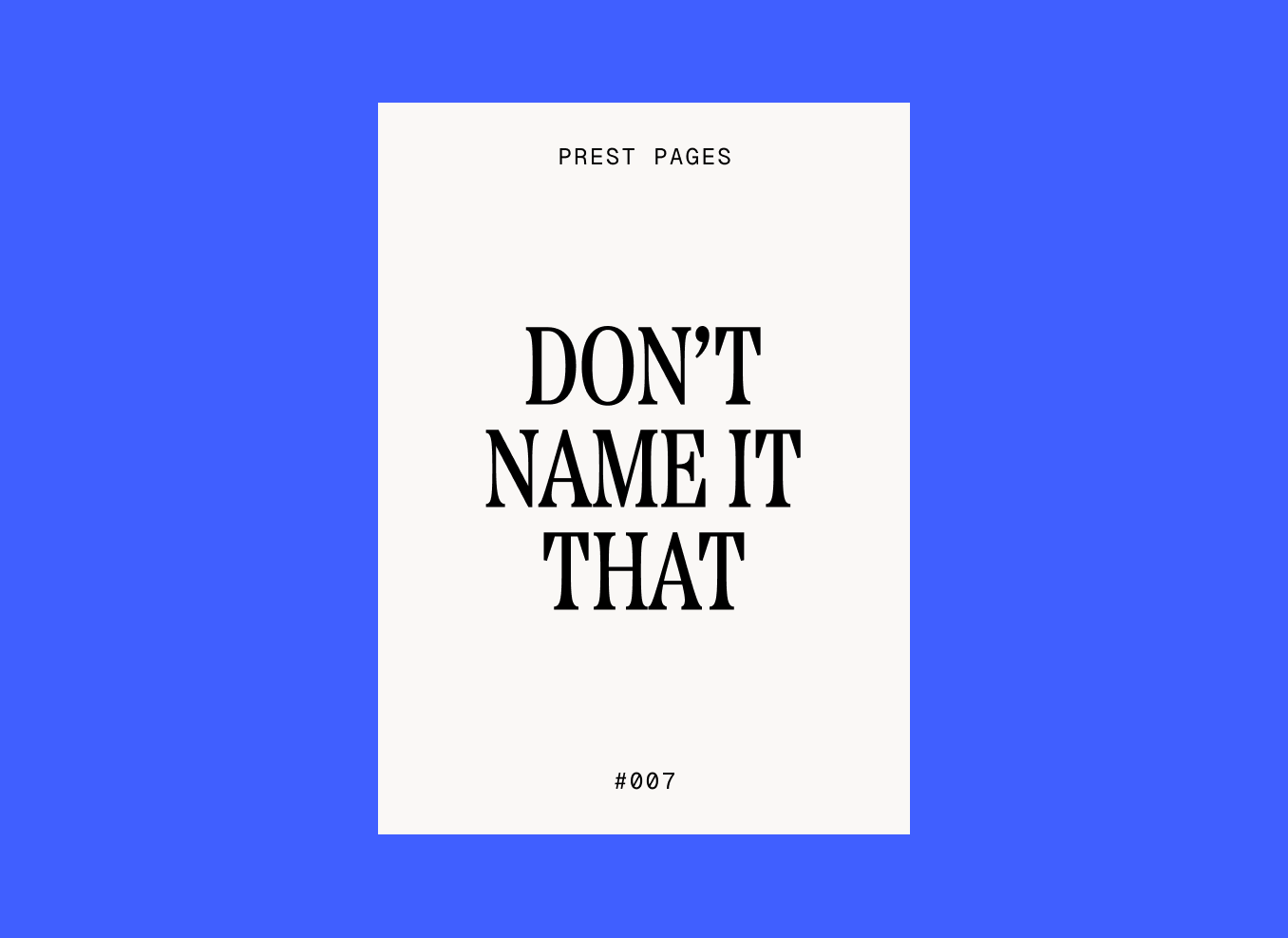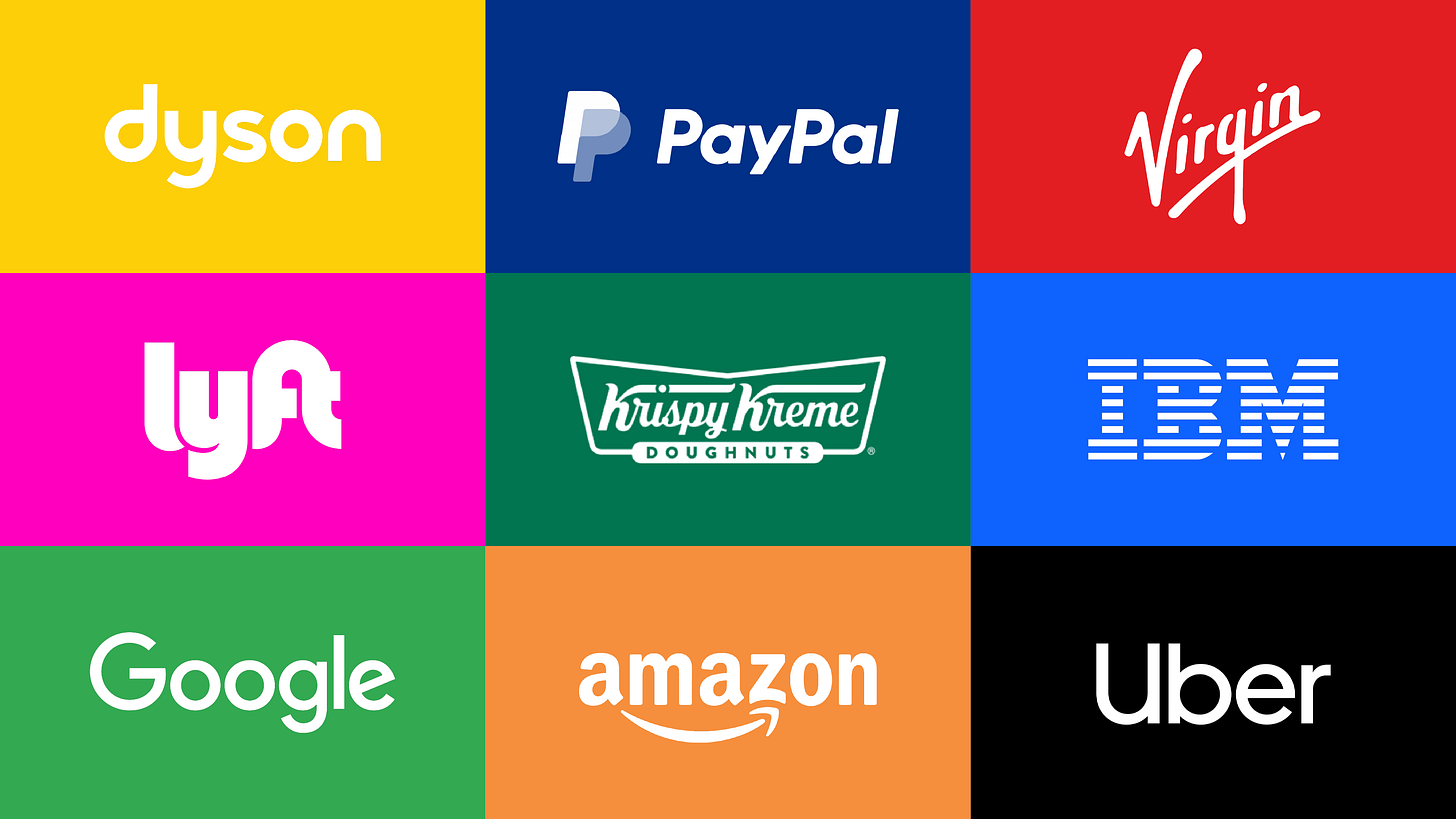Don't Name it That
Page 7: A quick guide to naming companies, products and things
Naming things is hard, and that’s putting it lightly. You sit down with a blank page and all the excitement of starting something new. You’ve got the idea. The passion. The drive. But then it hits you… “What the hell do I call this thing?”
I’ve been there. When I first had the idea for PREST back in university, I called it “Spectrum”. It seemed to cover all bases. You know, broad, colourful, inclusive. But it just didn’t feel right. It was generic, like it could be anyone’s business, not mine. So, I changed it to “Manual”. I liked the craftsmanship it suggested, the hands-on, thoughtful approach. But, again, as time went on, it didn’t quite fit either. It felt a little slow, too old-fashioned for what I wanted to build. Then came “Prest”. A shorter name, sharper, with an energy that clicked. It felt more ownable and in line with my vision, and had some meaning behind it too.
Naming is a process. Sometimes it takes a few tries before you land on something that feels right. Sure, there’s a bit of an art to it. But before you panic, there’s only a few ways to name something. Really. A handful of categories that make the process feel a lot easier.
1. Descriptive Names
These are the names that tell you exactly what it is. No mystery. Just straight-up, no-nonsense, this is what we do. Think Pizza Hut, The Carphone Warehouse or VitaminWater. You can’t get more direct than that. It’s clear. Simple. But can be a little boring. Don’t expect to win any awards for originality here.
2. Suggestive names
This is where the fun starts. Suggestive names give a hint of what you’re about without spelling it out. Think Amazon. They don’t sell jungles, but the name hints at something massive. Or Dropbox. It’s not just a box, it’s digital magic in the cloud. These names make you curious. They pull you in. But they still need some storytelling behind them.
3. Abstract names
These are names that don’t mean anything on their own—until you make them mean something. Google, taken from the number “googol”, was just a funny word to most people, until it became the verb we all use. Kodak? Sounds like something you’d shout at your dog. These names can be riskier but they’re easier to trademark. Get it right, and you own the dictionary.
4. Evocative names
Want to make people feel something? These are your go-to names. Patagonia. Virgin. Uber. These names fall between descriptive and non-descriptive, and they’re used to create images and feelings in your head. You’re not just buying a jacket—you’re buying adventure. You’re not just getting a ride—you’re getting a fast one. Evocative names are emotional. They stick. And they can make a small brand feel huge.
5. Lexical names
Lexical names play with language—think Krispy Kreme or Dunkin’ Donuts. Fun, playful, and designed to stick in your head. They’re catchy, they roll off the tongue, and they’re great for brands that don’t take themselves too seriously. These names often use alliteration or rhymes to make them more memorable.
6. Compound names
These names combine two words to create something new. They’re simple, clear, and often hint at what your brand does. Think Netflix (internet + movies) or PayPal (payments + friend). These names are easy to remember and explain your product without being overly literal, like Snapchat, FedEx, and Instagram.
7. Initials and acronyms
If you can’t think of a name, just turn your whole business into an acronym. BMW. UPS. IBM. KFC. They started out as something much longer and, let’s be honest, kind of forgettable. Acronyms are shortcuts. They’re simple. Easy to remember. But there’s not much soul in them. Quick and easy, but not exactly thrilling.
8. Misspelt names
Misspelt names tweak familiar words to feel fresh and unique. By changing letters, brands like Lyft, Zillow and Tumblr stand out, sound modern, and create their own identity. They’re great for securing domain names and trademarks while staying recognisable. Awful when you have to spell it out to someone though.
9. Name names
Slap your name on the door and call it a day. Ford. Dyson. McDonald’s. Disney. When it works, it’s legacy-making. If you’ve got the name (and the ego) to carry it off, go for it. Alternatively, use someone else’s name, like Tesla or Nike. Or you could just make someone up, like Dr. Pepper or Captain Morgan.
Some reassurance
Names don’t matter half as much as we think. You don’t always need to hit perfection on day one. The name will usually grow with the brand. It picks up meaning, memories, and momentum along the way. Think about brands like Nike or Apple. Names that probably seemed a bit random at first, but now they carry entire worlds of associations.
So, don’t stress too much. You’ll know when it feels right. Whether it’s descriptive, abstract, or something totally unexpected, the most important thing is that it reflects what you’re passionate about. After all, it’s the work behind the name that makes it stick.
In the end, a name is just the beginning. The real magic happens when you build something meaningful behind it.
Until next time,
Callum





